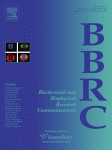※ GPS-PAIL INTRODUCTION
There are two types of acetylation processes widely occurred in proteins. The first Nα-terminal acetylation is catalyzed a variety of N-terminal acetyltransferases (NATs), which cotranslationally transfer acetyl moieties from acetyl-coenzyme A (Acetyl-CoA) to the α-amino (Nα) group of protein amino-terminal residues. Although Nα-terminal acetylation is rare in prokaryotes, it was estimated that about 85% of eukaryotic proteins are Nα-terminally modified (Polevoda et al., 2000; Polevoda et al., 2002). The second type is Nε-lysine acetylation, which specifically modifies ε-amino group of protein lysine residues (Yang et al., 2007; Shahbazian et al., 2007; Smith et al., 2009). Although Nε-lysine acetylation is less common, it's one of the most important and ubiquitous post-translational modifications conserved in prokaryotes and eukaryotes. Moreover, the acetylation and deacetylation are dynamically and temporally regulated by histone acetyltransferases (HATs) and histone deacetylases (HDACs), respectively (Yang et al., 2004; Lee et al., 2007).
In 1964, Allfrey et al. firstly observed that lysine acetylation of histones plays an essential role in regulation of gene expression (Allfrey et al., 1964). Later and recent studies in epigenetics solidified this seminal discovery, and proposed acetylation as a key component of the "histone code" (Jenuwein et al., 2001). Beyond histones, a wide range of non-histone proteins can also be lysine acetylated, and involved in a variety of biological processes, such as transcription regulation (Yuan et al., 2005), DNA replication (Terret et al., 2009; Choudhary et al., 2009), cellular signaling (Walkinshaw et al., 2008; Spange et al., 2009), stress response (Brunet et al., 2004) and so on. Aberrance of lysine acetylation and deacetylation is associated with various diseases and cancers (Kim et al., 2006). In particular, acetylation was demonstrated to be implicated in cellular metabolism and aging (Wang et al., 2010; Zhao et al., 2010), while one class of NAD+ dependent HDACs of sirtuins might be potent drug target for promoting longevity (Cohen et al., 2004; Wang et al., 2010).
Currently, the GPS-PAIL 2.0 software were developed for prediction of substrates and sites of 7 HATs including CREBBP, EP300, HAT1, KAT2A, KAT2B, KAT5, KAT8. The local packages of GPS-PAIL 2.0 were developed in JAVA 1.5 (J2SE).
The previous version of PAIL 1.0 were moved to here or http://bdmpail.biocuckoo.org/.
For publication of results please cite the following article:  GPS-PAIL: prediction of lysine acetyltransferase-specific modification sites from protein sequences
GPS-PAIL: prediction of lysine acetyltransferase-specific modification sites from protein sequencesWankun Deng, Chenwei Wang, Ying Zhang, Yang Xu, Shuang Zhang, Zexian Liu and Yu Xue. Scientific Reports, 2016, In press
|
 Prediction of Nepsilon-acetylation on internal lysines implemented in Bayesian Discriminant Method
Prediction of Nepsilon-acetylation on internal lysines implemented in Bayesian Discriminant MethodAo Li, Yu Xue, Changjiang Jin, Minghui Wang and Xuebiao Yao Biochem. Biophys. Res. Commun., 2006, 350(4): 818-824. |



